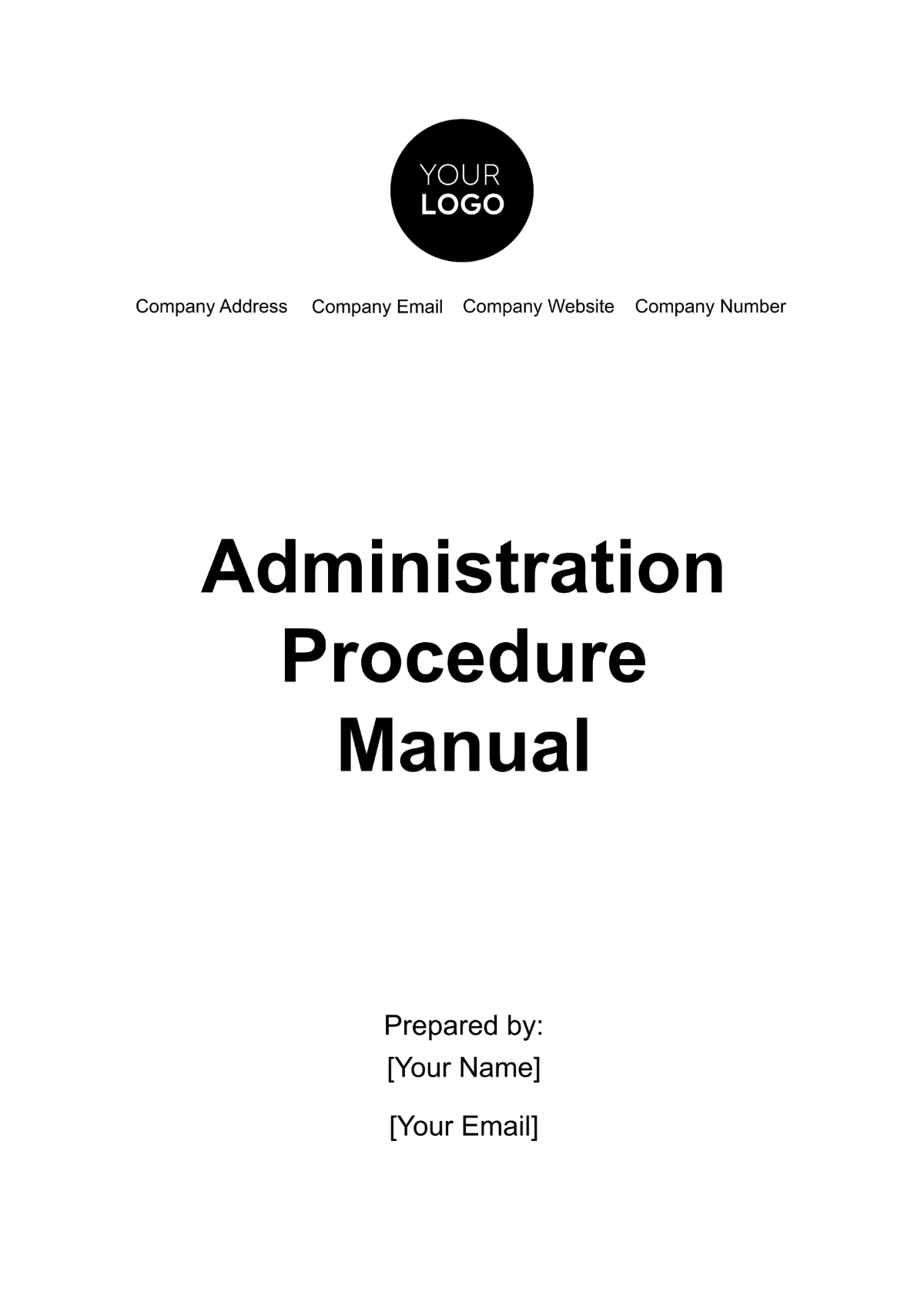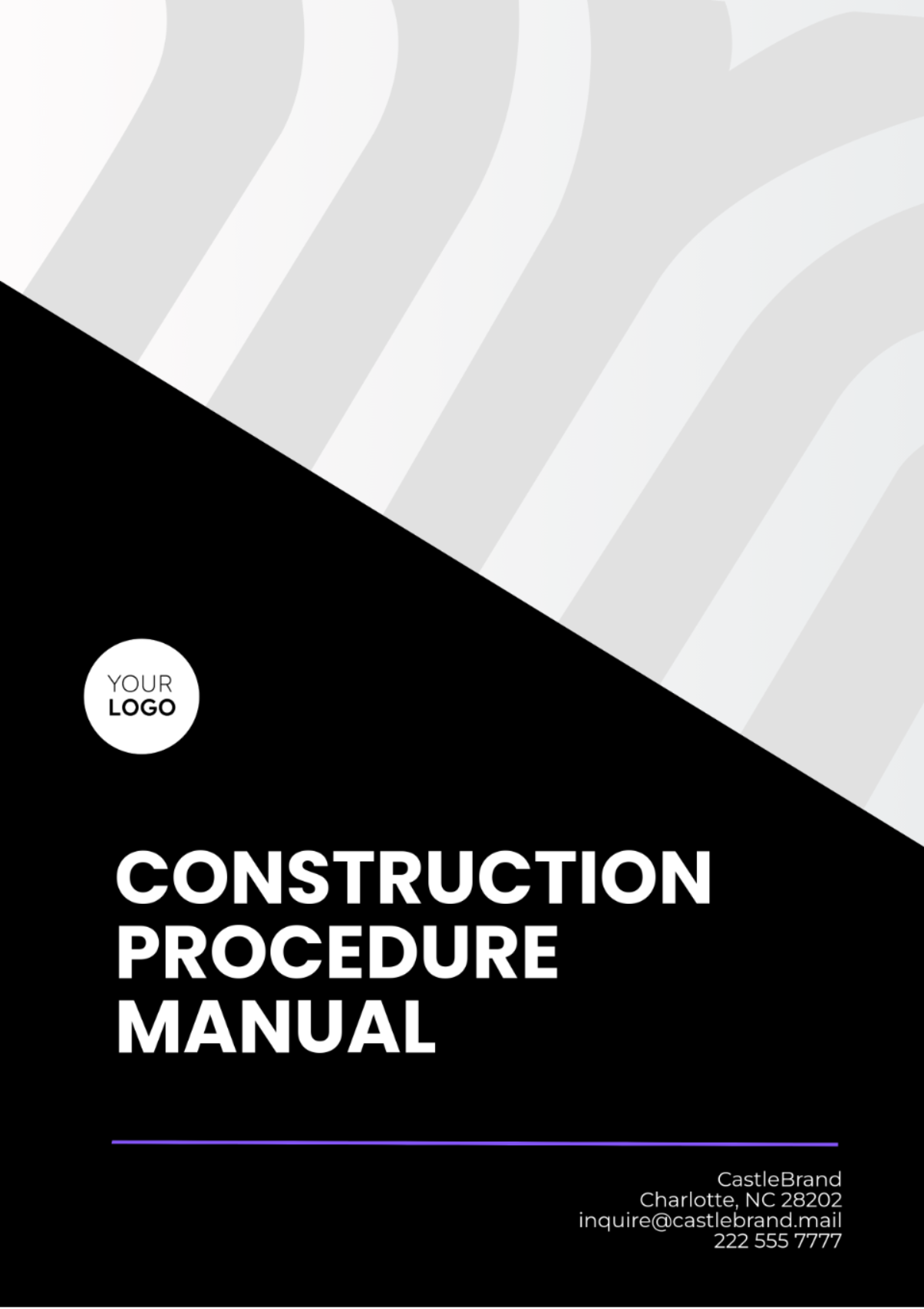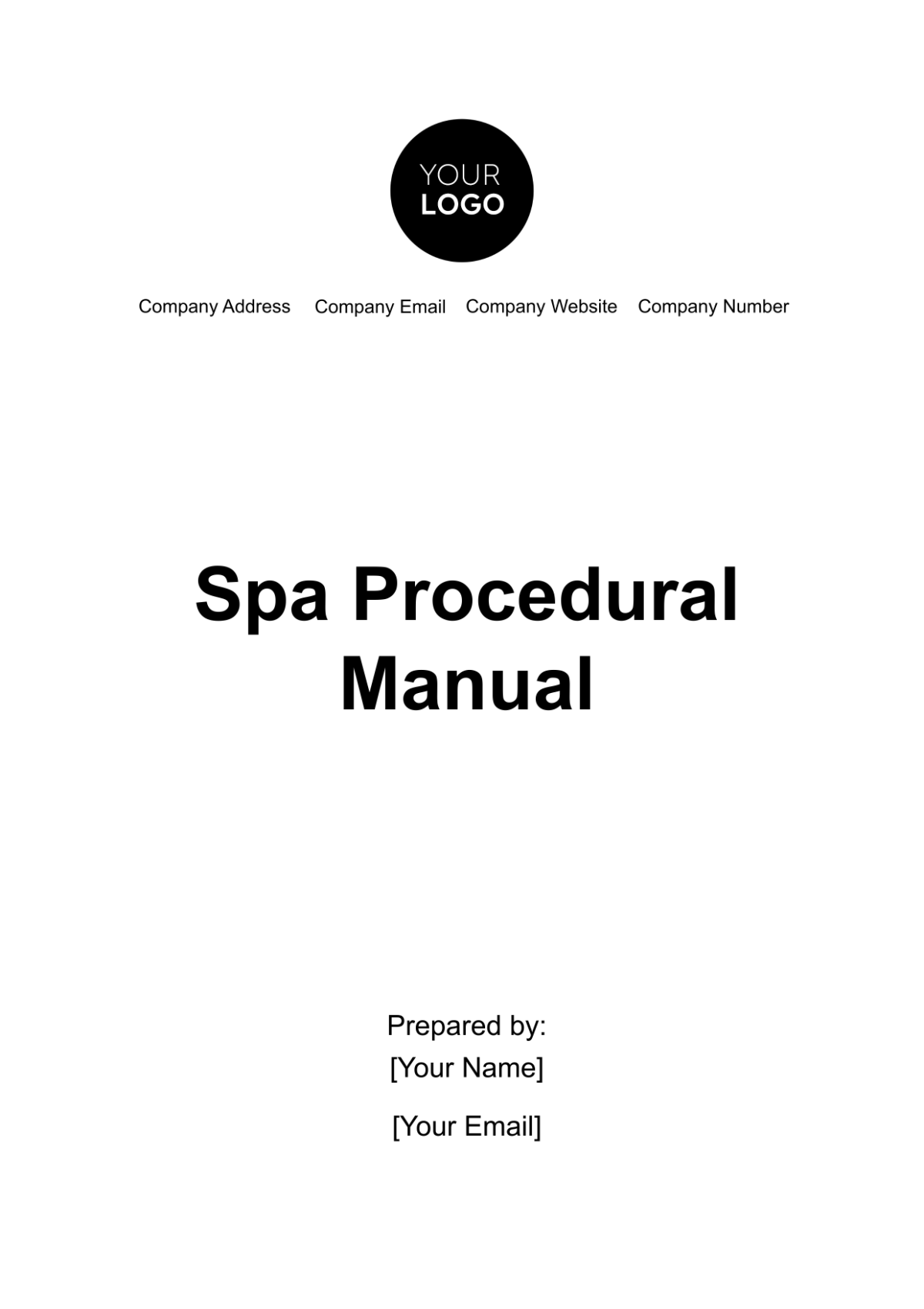Accounting Procedures Manual
TABLE OF CONTENTS
Introduction.............................................................................................................3
Accounting Roles and Responsibilities.................................................................4
General Ledger Maintenance.................................................................................6
Accounts Payable Procedures................................................................................8
Accounts Receivable Procedures...........................................................................9
Conclusion.................................................................................................................10
Introduction
This manual provides a comprehensive overview of the accounting protocols implemented at [Your Company Name]. Its primary objective is to ensure accuracy, unwavering consistency, and strict adherence to regulatory compliance in the management and handling of financial data and transactions. By following these guidelines, [Your Company Name] establishes a robust framework for financial integrity and accountability.
Accounting Roles and Responsibilities
The accounting department at [Your Company Name] plays a critical role in the stewardship of the organization's financial health. To facilitate this, it is essential that every team member has a profound understanding of their specific responsibilities. This section categorically breaks down the key roles within the department, detailing their individual duties to ensure clarity and efficiency in financial management:
Accounting Manager:
This role is pivotal in overseeing the entire financial reporting process of the organization. The Accounting Manager is responsible for guiding and supervising the accounting team, ensuring timely and accurate financial reporting, and implementing best practices in financial management.
Bookkeeper:
The Bookkeeper is tasked with the diligent recording and maintenance of daily financial transactions. Responsibilities include keeping comprehensive records of all financial activities, reconciling bank statements, and preparing initial financial statements.
Audit Officer:
The Audit Officer plays a crucial role in safeguarding the integrity of financial records. Responsibilities involve conducting thorough audits, both internal and external, to ensure compliance with legal standards and accuracy of financial data. This role is integral in identifying discrepancies and recommending corrective actions to uphold financial accuracy and reliability.
Financial Analyst:
The Financial Analyst is tasked with interpreting financial data and providing insights for decision-making. They analyze trends, costs, revenues, financial commitments, and obligations to project future revenues and expenses. This role involves closely working with the management team to support strategic planning and financial forecasting.
Compliance Officer:
The Compliance Officer ensures that the organization adheres to external legal and regulatory requirements as well as internal policies and procedures. They play a critical role in auditing financial processes, identifying compliance risks, and implementing solutions to mitigate these risks. Their role is crucial in maintaining the integrity and legal compliance of the company's financial operations.
Accounts Receivable Clerk:
This role focuses on managing incoming funds. Responsibilities include issuing invoices, processing payments, and maintaining accurate records of all receivable accounts. The Accounts Receivable Clerk also assists in resolving discrepancies, handling customer queries regarding billing, and ensuring timely collection of payments.
By clearly defining these roles, [Your Company Name] ensures a robust and effective accounting department, capable of managing the organization's financial affairs with precision and accountability.
General Ledger Maintenance
The general ledger stands as the cornerstone of accounting practices at [Your Company Name]. This critical section offers a detailed framework for managing the general ledger, which is essential for recording and consolidating all financial transactions of the organization. The procedures outlined here are comprehensive and encompass several key areas:
Transaction Entry:
Guidelines for accurately entering transactions into the general ledger, ensuring that each entry is categorized correctly and reflects the true nature of the transaction.
Accuracy: Accurate transaction entry is paramount. Errors or inaccuracies in this phase can propagate throughout financial statements, potentially impacting decision-making, compliance, and the overall financial health of the organization. Employees are expected to exercise due diligence, double-check information, and utilize appropriate tools and resources to minimize the risk of errors.
Categorization and Classification: Entries must be categorized meticulously to reflect the nature of the transaction accurately. This categorization includes distinguishing between revenues, expenses, assets, liabilities, and equity accounts, among others. Proper classification ensures that financial statements convey a true and fair view of the company's financial position and performance.
Detailed Documentation: A comprehensive description or reference should accompany each transaction entry. This documentation should provide adequate context and clarity, making it easier for auditors, colleagues, or future reviewers to understand the transaction's purpose and legitimacy. Detailed documentation also aids in traceability and facilitates the identification of any discrepancies or irregularities.
Adherence to Accounting Standards: Employees responsible for transaction entry must adhere strictly to established accounting standards and principles. Compliance with these standards is essential for consistency and comparability of financial information. Staying abreast of any changes or updates to accounting standards is equally important to ensure ongoing alignment.
Timeliness and Consistency: Transactions should be entered in a timely manner to prevent backlogs and ensure that financial information remains current. Consistency in transaction entry procedures across all departments and teams promotes uniformity and eases the consolidation of financial data.
Audit Trail and Controls: Robust controls should be in place to safeguard the accuracy and integrity of transaction entries. This includes access controls, segregation of duties, and regular reconciliations. An audit trail, maintained for all transactions, helps in tracing the sequence of events and verifying the validity of entries.
Reconciliation Processes:
Detailed steps for reconciling ledger entries with bank statements and other financial documents. This process is vital for verifying the accuracy of recorded transactions and identifying any discrepancies.
Structured Reconciliation Steps: The reconciliation process begins with a structured sequence of steps, designed to ensure a comprehensive and rigorous review of financial records. These steps involve comparing ledger entries against corresponding bank statements and other financial documents.
Validation of Accuracy: A core objective of reconciliation is to validate the accuracy of recorded transactions. This involves ensuring that all transactions recorded in the ledger correspond precisely to those reflected in the bank statements. Any disparities or inconsistencies discovered during this phase are meticulously investigated and rectified.
Identification of Discrepancies: An essential function of reconciliation is the swift identification of discrepancies, whether they stem from errors, omissions, or unauthorized transactions. Discrepancies are flagged for further examination and resolution, safeguarding against potential financial irregularities.
Root Cause Analysis: Upon identifying discrepancies, a root cause analysis is initiated to trace the origin and nature of the discrepancies. This process helps uncover the underlying issues that may require procedural adjustments or additional controls to prevent recurrence.
Documentation and Audit Trail: Detailed documentation of the reconciliation process, including findings and corrective actions taken, is essential. This documentation forms an integral part of the financial record-keeping and serves as an audit trail for future reference. An audit trail not only aids in accountability but also facilitates transparency and provides insights into the reconciliation process.
Timely Resolution: Prompt resolution of identified discrepancies is imperative. Delays in addressing discrepancies may have cascading effects on financial reporting and decision-making. A clear protocol for addressing and rectifying discrepancies is established to ensure a swift and efficient resolution process.
Regular Review and Compliance: Reconciliation processes are conducted at regular intervals to maintain the ongoing accuracy of financial records. Compliance with established reconciliation procedures is closely monitored, and any deviations are addressed promptly to reinforce consistency.
Continuous Improvement: The reconciliation process is subject to continuous improvement efforts, with periodic evaluations and feedback loops to enhance its efficiency and effectiveness. Adaptations to changing financial practices or regulatory requirements are incorporated into the reconciliation process as needed.
Error Correction:
Procedures for identifying and rectifying inaccuracies in the general ledger. This includes steps for making adjustments and ensuring that all entries are accurate and up to date.
Precise Error Identification: The error correction process begins with precise identification of inaccuracies within the general ledger. This involves a comprehensive examination of ledger entries, comparing them with corresponding source documents, and discerning any deviations or inconsistencies.
Structured Adjustment Procedures: Upon pinpointing inaccuracies, structured adjustment procedures are employed to rectify them swiftly and effectively. These procedures adhere to recognized accounting standards and principles, ensuring the integrity of the correction process.
Validation and Reconciliation: Validation and reconciliation steps are integral to error correction. These involve cross-referencing the corrected entries with original source documents and reconciling them to ensure that the discrepancies have been accurately resolved.
Timeliness and Compliance: Timeliness in error correction is paramount to prevent potential ripple effects on financial statements and decision-making. Compliance with established error correction procedures is closely monitored to guarantee consistency and adherence to best practices.
Financial Statement Preparation:
Instructions for compiling and preparing financial statements from the general ledger data. This involves summarizing the financial activities of the organization over a specific period and presenting them in standardized formats such as balance sheets, income statements, and cash flow statements.
Data Compilation and Aggregation: Financial statement preparation initiates with the meticulous compilation and aggregation of financial data from the general ledger. This data encompasses a wide range of financial activities conducted by the organization over a specific reporting period.
Standardized Formatting: Financial statements are presented in standardized formats recognized by regulatory authorities and stakeholders. These formats include balance sheets, income statements, and cash flow statements, each providing a unique perspective on the organization's financial health.
Accuracy and Consistency: Stringent quality checks and reviews are conducted to ensure the accuracy and consistency of the financial statements. These measures encompass reconciliation with underlying ledger data to validate the integrity of the statements.
Transparency and Disclosure: Financial statement preparation emphasizes transparency and disclosure, with clear notations and explanations provided for significant accounting policies and assumptions. This transparency enhances stakeholders' understanding of the financial data presented.
Regulatory Compliance: Adherence to regulatory requirements, accounting standards, and reporting deadlines is paramount in financial statement preparation. Our commitment to regulatory compliance ensures the reliability and credibility of our financial reporting.
Stakeholder Communication: Prepared financial statements serve as a crucial means of communication with stakeholders, including investors, creditors, and regulatory bodies. They provide insights into the organization's financial performance and position.
By adhering to these guidelines, [Your Company Name] ensures that the general ledger is maintained with utmost accuracy and integrity, thereby providing a reliable foundation for financial decision-making and reporting.
Accounts Payable Procedures
[Your Company Name] implements a comprehensive and structured approach to managing its accounts payable process. This section elucidates the complete spectrum of procedures, from the initiation of purchases to the finalization of payments. The established guidelines are meticulously crafted to maintain precision and efficiency in every phase:
Purchase Initiation and Approval:
Procedures for initiating purchase requests, including the necessary approvals and verifications needed before proceeding with a transaction. This ensures that all purchases are authorized and necessary for business operations.
Invoice Processing:
Detailed instructions on receiving and processing invoices from suppliers and vendors. This includes verification of invoice details, matching invoices with purchase orders, and confirming receipt of goods or services.
Payment Scheduling and Execution:
Guidelines for scheduling and executing payments to suppliers and vendors. This involves ensuring that payments are processed in a timely manner, adhering to agreed-upon terms, and preventing late payment fees or disruptions in supply.
Duplicate Payment Prevention:
Measures to avoid duplicate payments, which include systematic checks and balances within the payment process. This is crucial for maintaining financial accuracy and avoiding unnecessary expenses.
Record Keeping and Reconciliation:
Procedures for maintaining accurate records of all transactions and regular reconciliation of accounts payable records with bank statements. This is essential for ensuring financial integrity and facilitating audits.
By following these procedures, [Your Company Name] ensures that its accounts payable process is not only efficient and timely but also robust in preventing errors and safeguarding against financial inconsistencies. This approach is critical in maintaining strong relationships with suppliers and vendors, ensuring operational continuity, and upholding the company's financial health.
Sample Invoice Processing:
Category | Details |
|---|---|
Invoice Number: | INV-001 |
Vendor Name: | |
Purchase Order Number: | |
Date Received: | |
Item Description: | |
Quantity: | |
Invoice Amount: | |
Payment Due Date: | |
Invoice Status: |
This table is utilized for managing and tracking the status of invoices from the point of receipt to the completion of payment. It ensures that all invoices are processed efficiently, payments are made timely, and financial records are accurately maintained.
Accounts Receivable Procedures
[Your Company Name] places a high emphasis on the meticulous management of accounts receivable, recognizing its critical role in sustaining healthy cash flow and fostering robust customer relationships. This section presents an extensive array of procedures designed to optimize the efficiency and accuracy of our accounts receivable operations:
Invoice Issuance and Management:
Invoice Generation:
Established protocols for the immediate creation and issuance of invoices following the delivery of goods or services. Ensuring that invoices are generated without delay to facilitate prompt payment.
Invoice Details:
Mandate to include all critical details on invoices such as the date of issue, payment due date, detailed description of items or services, quantities, unit prices, and clear payment terms. Emphasis on the inclusion of all pertinent information to prevent ambiguities and facilitate a smoother payment process.
Invoice Accuracy and Clarity:
Stringent processes to verify the accuracy of each invoice, ensuring they are free from errors and easy to understand. Commitment to clarity in invoicing to reduce the likelihood of disputes and accelerate the payment cycle.
Tracking Receivables:
Receivable Monitoring Systems:
Implementation of robust systems to actively monitor and manage outstanding invoices. Regular tracking of receivable aging to identify delayed payments promptly.
Continuous Account Updates:
Routine updating of customer accounts to accurately reflect recent payments and current balances. Ensuring up-to-date account information for effective receivables management.
Advanced Tracking Software:
Deployment of state-of-the-art software tools for real-time tracking and comprehensive reporting of receivables. Leveraging technology to enhance visibility and control over the accounts receivable process.
Collection Strategies:
Proactive Follow-Up Procedures:
Execution of timely and effective strategies for following up on overdue invoices, including sending reminder notices and engaging in direct communication with customers. Balancing firmness in collection efforts with maintaining positive customer relations.
Escalation of Collection Efforts:
Structured approach for intensifying collection activities for significantly overdue accounts, while upholding professional standards and customer goodwill. Tactics for managing sensitive situations with tact and diplomacy.
Dispute Resolution and Payment Negotiations:
Clear policies and procedures for addressing and resolving disputed charges. Framework for negotiating payment plans with customers, providing flexibility while ensuring recovery of dues.
Managing Overdue Accounts:
Overdue Account Identification:
Criteria and guidelines for classifying an account as overdue, based on predefined payment terms. Systematic approach to identifying overdue accounts for targeted collection efforts.
Engagement with Overdue Accounts:
Step-by-step procedures for initiating contact with customers regarding overdue payments, including a hierarchy of written notices, phone calls, and, if necessary, legal measures. Strategies for effective communication aimed at resolution and payment.
Service Suspension Policies:
Clearly defined policies regarding the suspension of services or the withholding of goods for customers with a history of chronic overdue payments. Ensuring that such measures are taken as a last resort and in compliance with contractual and legal obligations.
By implementing these procedures, [Your Company Name] aims to streamline its accounts receivable process, ensuring prompt invoice payment, minimizing bad debts, and maintaining positive customer interactions. This strategic approach not only enhances financial stability but also contributes to the overall customer experience and reputation of the company.
Conclusion
This manual is meticulously crafted to streamline and enhance the accounting operations at [Your Company Name]. It serves as a reliable foundation upon which customers, employees, and stakeholders can depend for precision, uniformity, and efficiency in our financial dealings. The procedures outlined herein are designed to guarantee that our financial reporting and transactions are accurate and optimized for operational effectiveness. This commitment to excellence in financial management reinforces our dedication to upholding the highest standards in all aspects of our business operations.

















































